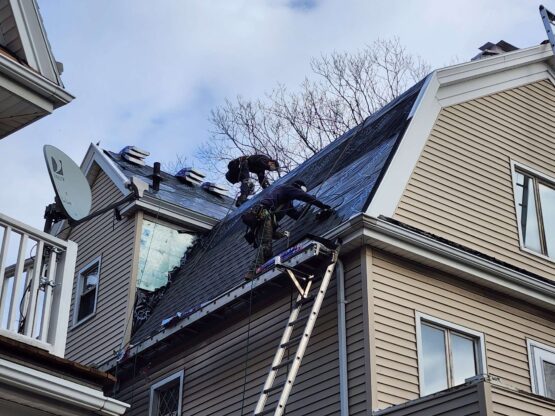The most critical aspect of a house is the foundation, but the roof is a near second. The roof is essential for safeguarding a home’s residents from the elements and protecting their assets. A strong roof shields residents from rain, snow, wind, heat, cold, and everything in between. An old or poorly installed roof can leak, wobble in the wind, and crumble in the snow.
For commercial and residential roofing, as well as general construction services, contact Stella Roofing Services.

Key Parts of Roofing
- Truss: A truss is the framework that runs the length of the roof. It is made up of various components, including rafters, ridge rafters, and supports the covering, sheathing, underlayment, and insulation.
- Battens: The tiles are kept in place by these timber or metal strips. They have different gapping to accommodate different types of tiles.
- Rafters: These are usually made of wood, but metal versions are also available. They form the structure and run from one end of the roof to the other. It binds the ceiling joists and supports the lining, padding, and sheeting.
- Fascia: Fascia are the horizontal wood planks that run along the roof’s edges. It is nailed to the rafters and can also serve as gutter support. The addition also contributes to the property’s aesthetics and value.
- Covering: Covering is the material that is nailed to the rafters and keeps rain, sun, wind, snow, animal droppings, dust, dirt, and other debris out. Common covering materials include iron sheets, tiles, concrete, and slate.
- Ceiling Joists and Ties: These wooden planks extend along the rafters and add strength to the rafters. They also help in the installation of the soffits.
- Soffits: The soffit is the region noticeable when looking straight up at a roof. It hides the rafters and ceiling joists between the wall and the fascia or eaves.
- Valley: It is the right-angle connection between two pitched or sloped roofs (90 degrees). A valley rafter supports a shallow gutter-like piece below the valley to allow water and other debris to trickle down into the gutter.
- Ridge: You can see it on pitched, gambrel, gable, mansard, and other roof forms. It connects the roof’s two sides and is the highest point.
- Ridge Tile: A ridge tile is the ridge’s lining, which is made up of tiles. It prevents dust, dirt, water, moisture, and other debris from entering.
- Eaves: The eave is the lowest point of a pitched roof, such as a mansard, gambrel, gable, or other roofs. It’s also the location where the gutter connects to the roof.
- Underlayment: Underlayment is made up of waterproof bituminous fabric, rubber strips, and felt. It increases waterproofing by being installed over the sheathing.
- Sheathing: Over the rafters, an OSB, plywood, or particleboard is installed. It supports the underlayment as well as strengthens the roof.
Other notable parts of a roof include chimneys, ride vents, gables, purlins, step flushings, rakes, and skylights.
Contact Stella Construction
Learn more about the different parts of a roof, their function, and roofing services by contacting Stella Roofing Services. The roofing experts provide roof repair, installation, and maintenance — among other construction services — to residents of New England and other surrounding areas. Call our roofing service at (781) 999-1572 to get started.

